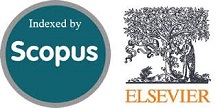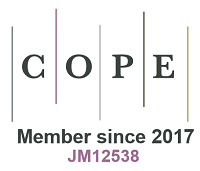Performance of Concrete MRF at Near-Field Earthquakes Compared to Far-Field Earthquakes
DOI:
https://doi.org/10.28991/cej-2019-03091285Keywords:
Near-Fault Earthquake, Building Performance, Concrete MRF, Inter-Story Drift Ratio, Floor Acceleration.Abstract
The characteristic of near-field earthquake records has been investigated in the previous studies. However, the effects of the near-field earthquakes on the response of the building structures need to be further investigated. Engineering demand parameters like inter-story drift ratio and floor acceleration can provide a good means for comparing the response of structures to the near-field and the far-field earthquakes. The main objective of this paper was to apply these two parameters to compare the behavior of the concrete Moment Resistant Frame (MRF) subjected to near-field and far-field ground motions. In this study, non-linear numerical simulations were performed on concrete MRF office buildings subjected to two sets of 14 near-field records and 14 far-field records. The analytical models simulated 4-story, 8-story, and 16 story buildings. The obtained results indicated that the near-field effects can increase the inter-story drift ratio and floor acceleration at lower stories of low and mid-rise building subjected to high ground motion intensities.
References
[2] Goda, Katsuichiro, Takashi Kiyota, Rama Mohan Pokhrel, Gabriele Chiaro, Toshihiko Katagiri, Keshab Sharma, and Sean Wilkinson. "The 2015 Gorkha Nepal Earthquake: Insights from Earthquake Damage Survey.” Frontiers in Built Environment 1 (June 22, 2015). doi:10.3389/fbuil.2015.00008.
[3] Bhagat, Satish, Anil C. Wijeyewickrema, and Naresh Subedi. "Influence of Near-Fault Ground Motions with Fling-Step and Forward-Directivity Characteristics on Seismic Response of Base-Isolated Buildings.” Journal of Earthquake Engineering (October 5, 2018): 1–20. doi:10.1080/13632469.2018.1520759.
[4] Fang, Cheng, Qiuming Zhong, Wei Wang, Shuling Hu, and Canxing Qiu. "Peak and Residual Responses of Steel Moment-Resisting and Braced Frames Under Pulse-Like Near-Fault Earthquakes.” Engineering Structures 177 (December 2018): 579–597. doi:10.1016/j.engstruct.2018.10.013.
[5] Kojima, Kotaro, and Izuru Takewaki. "Critical Earthquake Response of Elastic–Plastic Structures Under Near-Fault Ground Motions (Part 1: Fling-Step Input).” Frontiers in Built Environment 1 (July 27, 2015). doi:10.3389/fbuil.2015.00012.
[6] Cork, Timothy G., Jung Han Kim, George P. Mavroeidis, Jae Kwan Kim, Benedikt Halldorsson, and Apostolos S. Papageorgiou. "Effects of Tectonic Regime and Soil Conditions on the Pulse Period of Near-Fault Ground Motions.” Soil Dynamics and Earthquake Engineering 80 (January 2016): 102–118. doi:10.1016/j.soildyn.2015.09.011.
[7] Akkar, Sinan, Saed Moghimi, and Yalın Arıcı. "A Study on Major Seismological and Fault-Site Parameters Affecting Near-Fault Directivity Ground-Motion Demands for Strike-Slip Faulting for Their Possible Inclusion in Seismic Design Codes.” Soil Dynamics and Earthquake Engineering 104 (January 2018): 88–105. doi:10.1016/j.soildyn.2017.09.023.
[8] Bray, Jonathan D., and Adrian Rodriguez-Marek. "Characterization of Forward-Directivity Ground Motions in the Near-Fault Region.” Soil Dynamics and Earthquake Engineering 24, no. 11 (December 2004): 815–828. doi:10.1016/j.soildyn.2004.05.001.
[9] Somerville, Paul G. "Magnitude Scaling of the Near Fault Rupture Directivity Pulse.” Physics of the Earth and Planetary Interiors 137, no. 1–4 (May 2003): 201–212. doi:10.1016/s0031-9201(03)00015-3.
[10] Alavi, Babak, and Helmut Krawinkler. "Behavior of Moment-Resisting Frame Structures Subjected to Near-Fault Ground Motions.” Earthquake Engineering & Structural Dynamics 33, no. 6 (April 15, 2004): 687–706. doi:10.1002/eqe.369.
[11] International Code Council, International building code. Falls Church, Va.: International Code Council, 2006.
[12] ACI Committee 318 and American Concrete Institute, Building code requirements for structural concrete (ACI 318-11) and commentary. Farmington Hills, MI: American Concrete Institute, 2011.
[13] American Society of Civil Engineers, Ed., Minimum design loads for buildings and other structures. Reston, Va: American Society of Civil Engineers: Structural Engineering Institute, 2010.
[14] Zabihi-Samani, Masoud, Seyed Payam Mokhtari, and Farzaneh Raji. "Effects of Fly Ash on Mechanical Properties of Concrete.” Journal of Applied Engineering Sciences 8, no. 2 (December 1, 2018): 35–40. doi:10.2478/jaes-2018-0016.
[15] Goulet, Christine A., Curt B. Haselton, Judith Mitrani-Reiser, James L. Beck, Gregory G. Deierlein, Keith A. Porter, and Jonathan P. Stewart. "Evaluation of the Seismic Performance of a Code-Conforming Reinforced-Concrete Frame Building”from Seismic Hazard to Collapse Safety and Economic Losses.” Earthquake Engineering & Structural Dynamics 36, no. 13 (2007): 1973–1997. doi:10.1002/eqe.694.
[16] L. N. Lowes and A. Altoontash, "Modeling Reinforced-Concrete Beam-Column Joints Subjected to Cyclic Loading,” Journal of Structural Engineering, vol. 129, no. 12, pp. 1686–1697, Dec. 2003, DOI: 10.1061/(ASCE)0733-9445(2003)129:12(1686).
[17] Ibarra, Luis F., Ricardo A. Medina, and Helmut Krawinkler. "Hysteretic Models That Incorporate Strength and Stiffness Deterioration.” Earthquake Engineering & Structural Dynamics 34, no. 12 (2005): 1489–1511. doi:10.1002/eqe.495.
[18] M. N. Fardis and D. E. Biskinis, "Deformation capacity of RC members, as controlled by flexure or shear,” in Otani Symposium, 2003, vol. 511530.
[19] "NEHRP recommended provisions for seismic regulations for new buildings and other structures.” National Earthquake Hazards Reduction Program, 2015.
[20] Vamvatsikos, Dimitrios, and C. Allin Cornell. "Incremental Dynamic Analysis.” Earthquake Engineering & Structural Dynamics 31, no. 3 (2002): 491–514. doi:10.1002/eqe.141.
Downloads
Published
Issue
Section
License
- authors retain all copyrights - authors will not be forced to sign any copyright transfer agreements
- permission of re-useThis work (including HTML and PDF Files) is licensed under a Creative Commons Attribution 4.0 International License.







